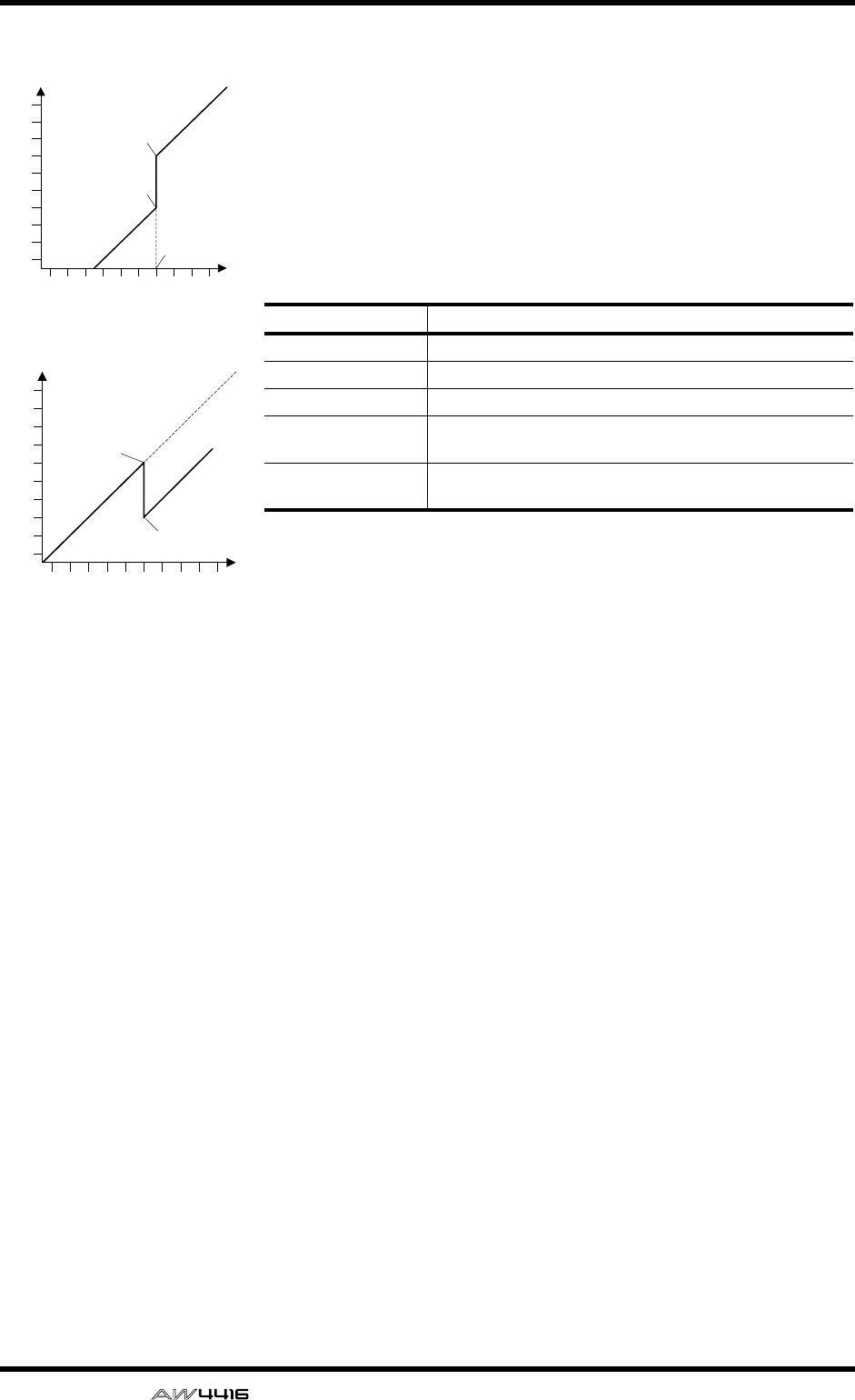
Appendix
Appendix–28 — Reference Guide
Gate and Ducking
A gate, or noise gate is an audio switch used to mute signals below a set
threshold level. It can be used to suppress background noise and hiss from
valve (tube) amps, effects pedals, and microphones.
Ducking is used to automatically reduce the levels of one signal when the
level of a source signal exceeds a specified threshold. It is used for voice-
over applications where, for example, level of background music is auto-
matically reduced, allowing an announcer to be heard clearly.
Gate (GAT) and Ducking (DUK) parameters:
Threshold sets the level at which the gate closes, cutting off the signal. Sig-
nals above the threshold level pass through unaffected. Signals at or below
the threshold cause the gate to close.
For ducking, trigger signal levels at and above the threshold level activate
ducking, and the signal level is reduced to a level set by the Range parame-
ter.
The trigger signal is determined using the KEY IN parameter.
Range controls the level to which the gate closes. It can be used to reduce
the signal level rather than cut it completely. At a setting of –70 dB, the gate
closes completely when the input signal falls below the threshold. At a set-
ting of –30 dB, the gate only closes so far allowing an attenuated signal
through. At a setting of 0 dB, the gate has no effect. When signals are gated
abruptly, the sudden cutoff can sound odd.
For ducking, a setting of –70 dB causes the signal to be virtually cutoff. At a
setting of –30 dB the signal is ducked by 30 dB. At a setting of 0 dB, the
duck has no effect.
Attack determines how fast the gate opens when the signal exceeds the
threshold level. Slow attack times can be used to remove the initial transient
edge of percussive sounds. Too slow an attack time makes some signals
sound backwards.
For ducking, this controls how soon the signal is ducked once the duck has
been triggered. With a fast attack time, the signal is ducked almost immedi-
ately. With a slow attack time, ducking fades the signal. Too fast an attack
time may sound abrupt.
Hold sets how long the gate stays open or the ducking remains active once
the trigger signal has fallen below the threshold level.
Decay controls how fast the gate closes once the hold time has expired. A
longer decay time produces a more natural gating effect, allowing the natu-
ral decay of an instrument to pass through.
For ducking, this determines how soon the ducker returns to its normal gain
after the hold time has expired.
Parameter Value
Threshold (dB) –54 to 0 (55 points)
Range (dB) –70 to 0 (71 points)
Attack (ms) 0 to 120 (121 points)
Hold (ms) 0.02 ms to 1.96s
*1
, 0.02 ms to 2.13 sec
*2
, 0.03 ms to 2.94 sec
*3
(216 points)
*1. These values are obtained when the sampling frequency is 48kHz.
*2. These values are obtained when the sampling frequency is 44.1 kHz.
*3. These values are obtained when the sampling frequency is 32 kHz
Decay (ms) 5ms to 42.3s *1., 6 ms to 46.0 sec*2.,
8 ms to 63.4 sec *3. (160 points)
-70
-60
-50
-40
-30
-20
-10
0
+10
+20
-70 -60 -50 -40 -30 -20 -10 0 +10 +20
Input Level
Output Level
dB
dB
Threshold = -10dB
Range = -30dB
Range = -70dB
-70
-60
-50
-40
-30
-20
-10
0
+10
+20
-70 -60 -50 -40 -30 -20 -10 0 +10 +20
Input Level
Output Level
dB
dB
Range = -30dB
Threshold = -20dB


















